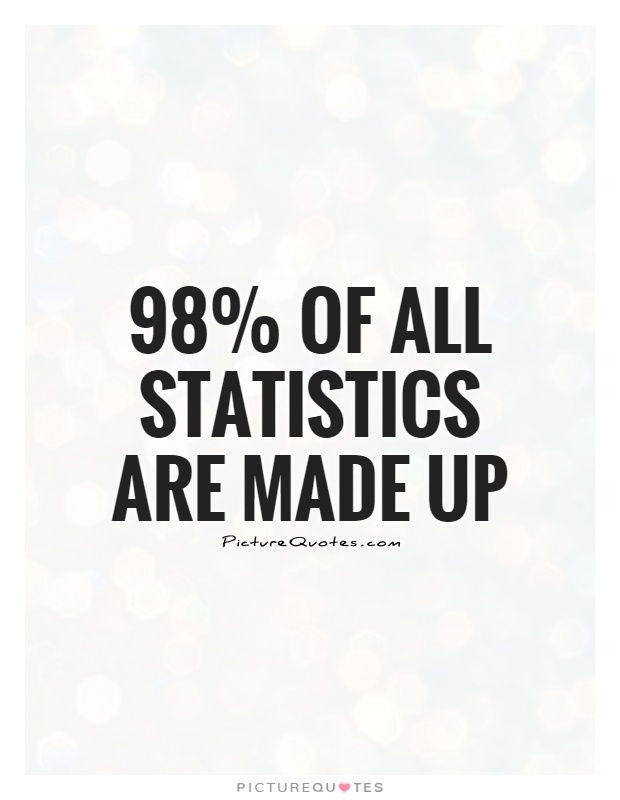98% of all statistics are made up

98% of all statistics are made up
The statement "98% of all statistics are made up" is often used humorously to highlight the potential for manipulation and misrepresentation in the field of statistics. While the exact percentage may be exaggerated for comedic effect, there is a grain of truth to the idea that statistics can be easily manipulated to support a particular agenda or viewpoint.Statistics are a powerful tool for understanding and interpreting data, but they can also be easily misused or misinterpreted. One common way that statistics can be manipulated is through selective reporting. By choosing which data to include or exclude from a study, researchers can skew the results to support a particular hypothesis or conclusion. This can lead to biased or misleading statistics that do not accurately reflect the true state of affairs.
Another way that statistics can be manipulated is through the use of small sample sizes. When a study is based on a small number of participants or data points, the results may not be representative of the larger population. This can lead to inaccurate or unreliable statistics that do not hold up under closer scrutiny.
Additionally, statistics can be manipulated through the use of misleading graphs or visual representations. By altering the scale or axes of a graph, researchers can make small differences appear much larger than they actually are. This can lead to misinterpretation of the data and a false sense of significance.
Despite these potential pitfalls, statistics remain an essential tool for making sense of the world around us. When used properly and responsibly, statistics can provide valuable insights and help us make informed decisions. It is important for consumers of statistics to be critical and skeptical of the data presented to them, and to consider the source and methodology behind the statistics before drawing any conclusions.












 Friendship Quotes
Friendship Quotes Love Quotes
Love Quotes Life Quotes
Life Quotes Funny Quotes
Funny Quotes Motivational Quotes
Motivational Quotes Inspirational Quotes
Inspirational Quotes